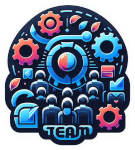
The Team Software Process (TSP) is a structured methodology that emphasizes collaboration, quality management, and disciplined engineering practices. In this second article of our series, we will delve into the core principles and practices of TSP, exploring how they contribute to enhanced productivity, quality, and project predictability. Understanding these principles is essential for effectively implementing TSP and reaping its full benefits.
Core Principles of TSP
1. Team Planning and Management
Team planning and management are fundamental to TSP. Teams collaboratively create detailed plans, set goals, and define roles and responsibilities. This collaborative approach ensures that all team members are committed to the project plan and understand their individual contributions.
Key Practices
- Goal Setting: Clearly defined goals help align the team's efforts and provide direction.
- Task Breakdown: Breaking down tasks into manageable units ensures that work is evenly distributed and progress can be tracked accurately.
- Role Assignment: Assigning specific roles (e.g., team leader, development manager, quality manager) ensures that critical aspects of the project are adequately addressed.
2. Defined Roles and Responsibilities
TSP defines specific roles within the team to ensure that various aspects of the project are managed effectively. These roles include the team leader, development manager, quality manager, and other specialized roles as needed. Clear role definitions help avoid confusion and ensure accountability.
Key Roles
- Team Leader: Facilitates team meetings, coordinates efforts, and ensures that the team stays on track.
- Development Manager: Oversees the development process, ensures adherence to the plan, and manages resources.
- Quality Manager: Focuses on maintaining high-quality standards, conducts reviews and inspections, and manages defect tracking.
3. Rigorous Quality Management
Quality management is a cornerstone of TSP. The process includes practices such as code reviews, inspections, and testing to identify and address defects early in the development cycle. This proactive approach to quality reduces the cost of rework and improves the reliability of the software.
Key Practices
- Code Reviews: Regular reviews ensure that code adheres to standards and best practices.
- Inspections: Thorough inspections help identify defects early, before they become costly to fix.
- Testing: Rigorous testing at various stages of development ensures that the software meets its quality requirements.
4. Data-Driven Decision Making
TSP relies on the collection and analysis of metrics to guide decision-making. Teams track various metrics, such as effort, schedule, and defect rates, to monitor progress and identify areas for improvement. This data-driven approach enables teams to make informed decisions and continuously improve their processes.
Key Metrics
- Effort Tracking: Monitoring the time spent on different tasks helps manage resources effectively.
- Schedule Tracking: Keeping track of project milestones ensures that the project stays on schedule.
- Defect Rates: Tracking defects helps identify areas that need attention and improves overall quality.
Implementing TSP Practices
1. Launch Phase
The launch phase is the starting point of the TSP life cycle, where the team defines project goals, roles, and a high-level plan. This phase sets the foundation for the entire project.
Activities
- Goal Definition: The team sets clear, achievable goals for the project.
- Role Assignment: Roles and responsibilities are assigned based on team members' strengths and expertise.
- High-Level Planning: The team creates a high-level plan outlining the major milestones and deliverables.
2. Planning Phase
During the planning phase, the team creates detailed plans, including task breakdowns, schedules, and resource allocation. This phase ensures that the project is well-organized and that all tasks are accounted for.
Activities
- Task Breakdown: Tasks are broken down into smaller, manageable units.
- Schedule Creation: A detailed schedule is created, outlining when each task will be completed.
- Resource Allocation: Resources are allocated based on the requirements of each task.
3. Execution Phase
In the execution phase, the team follows the plan, performs tasks, and tracks progress. This phase is where the bulk of the development work occurs.
Activities
- Task Execution: Team members work on their assigned tasks according to the plan.
- Progress Tracking: Progress is monitored regularly to ensure that the project stays on track.
- Issue Resolution: Any issues that arise are addressed promptly to avoid delays.
4. Assessment Phase
The assessment phase involves regular reviews and assessments to evaluate progress and quality. This phase ensures that the project remains aligned with its goals and that any deviations are corrected.
Activities
- Progress Reviews: Regular reviews are conducted to assess progress and identify any issues.
- Quality Assessments: Quality is assessed through code reviews, inspections, and testing.
- Adjustment Planning: Any necessary adjustments are made to keep the project on track.
5. Postmortem Phase
After project completion, the team conducts a postmortem review to evaluate outcomes, lessons learned, and areas for improvement. This phase is critical for continuous improvement.
Activities
- Outcome Evaluation: The team reviews the final outcomes of the project to assess success.
- Lessons Learned: Lessons learned during the project are documented and discussed.
- Improvement Planning: Plans are made to address any areas that need improvement for future projects.
Conclusion
The Team Software Process (TSP) offers a comprehensive framework for improving the quality, productivity, and predictability of software development projects. By understanding and implementing its core principles and practices, teams can achieve higher standards of collaboration, quality, and efficiency. In the next article of this series, we will explore practical steps for implementing TSP within your organization, providing actionable insights to help you get started.
Stay tuned to our blog at slaptijack.com for more in-depth tutorials and insights into modern software development practices. If you have any questions or need further assistance, feel free to reach out. Embrace the power of TSP and transform your software development process!
